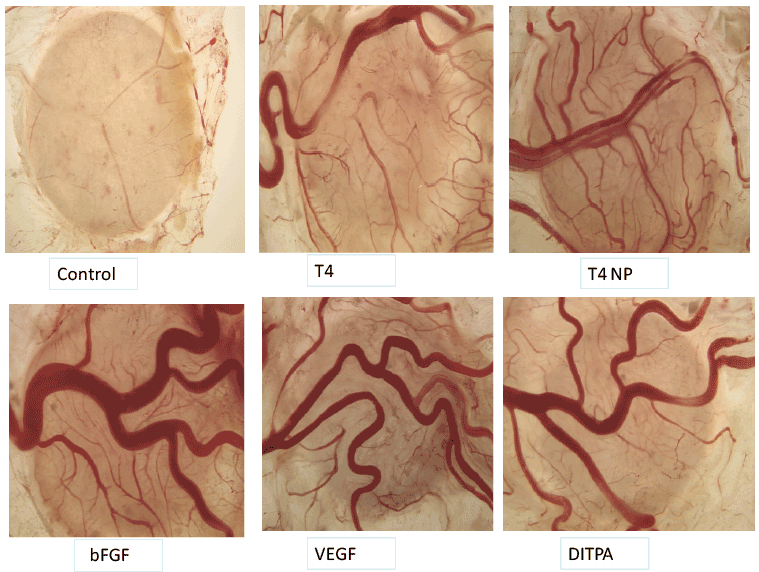
 |
| Figure 1: Photographic images of chick chorioallantoic membrane (CAM) assays of angiogenic activity of L-thyroxine (T4), nanoparticulate T4 (T4 NP) [19], bFGF, VEGF and diiodothyropionic acid (DITPA) [6], a thyroid hormone analogue. Control is phosphate-buffered saline. The methodology is described in Ref. 4. T4 NP is a formulation in which the hormone is covalently-bound via a linker to a nanoparticule (poly[lactic-co-glycolic acid]); the nanoparticle precludes cellular uptake of the hormone and limits activity of T4 to a receptor on the cell exterior (integrin αvβ3) that regulates angiogenesis [13] and a variety of other cell functions [19]. The integrin is generously expressed by rapidlydividing endothelial cells, as in this assay, and by tumor cells and osteoclasts [19]. Like T4 and T4 NP, DITPA initiates its proangiogenic activity at αvβ3. Vascular branch points in the CAM assay may be quantified [4,6] to enable statistical comparisons of activities of biologic fluids, of different pharmacologic agents and of endogenous growth factors. Among the latter are bFGF and VEGF, shown here. We propose the use of the assay for measurement of proangiogenic activity in human blood that may oppose cancer chemotherapy that is primarily anti-angiogenic. |